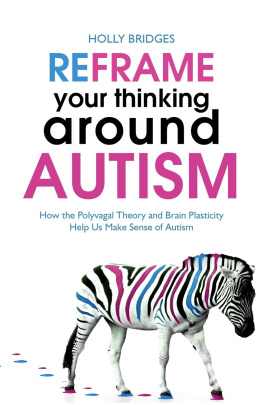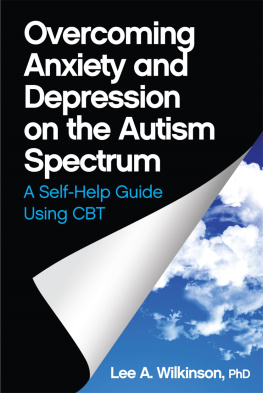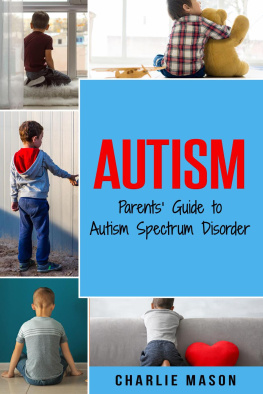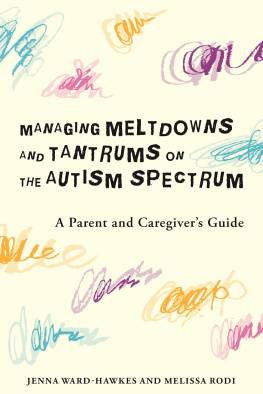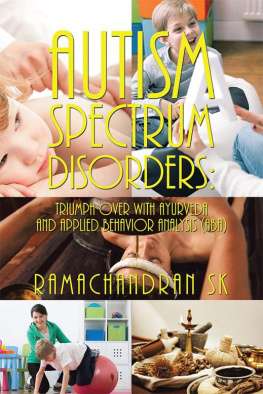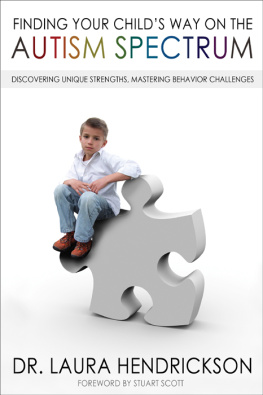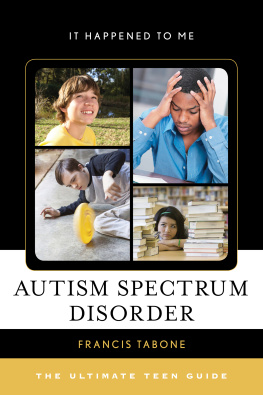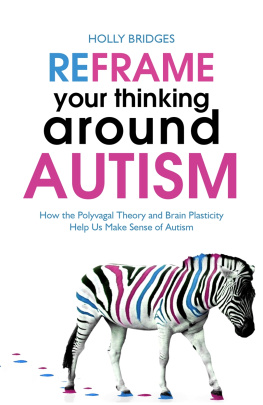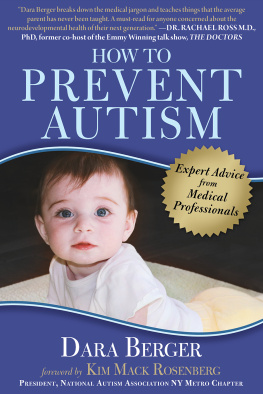Holly Bridges - Reframe Your Thinking Around Autism: How the Polyvagal Theory and Brain Plasticity Help Us Make Sense of Autism
Here you can read online Holly Bridges - Reframe Your Thinking Around Autism: How the Polyvagal Theory and Brain Plasticity Help Us Make Sense of Autism full text of the book (entire story) in english for free. Download pdf and epub, get meaning, cover and reviews about this ebook. year: 2015, publisher: Jessica Kingsley Publishers, genre: Religion. Description of the work, (preface) as well as reviews are available. Best literature library LitArk.com created for fans of good reading and offers a wide selection of genres:
Romance novel
Science fiction
Adventure
Detective
Science
History
Home and family
Prose
Art
Politics
Computer
Non-fiction
Religion
Business
Children
Humor
Choose a favorite category and find really read worthwhile books. Enjoy immersion in the world of imagination, feel the emotions of the characters or learn something new for yourself, make an fascinating discovery.
- Book:Reframe Your Thinking Around Autism: How the Polyvagal Theory and Brain Plasticity Help Us Make Sense of Autism
- Author:
- Publisher:Jessica Kingsley Publishers
- Genre:
- Year:2015
- Rating:4 / 5
- Favourites:Add to favourites
- Your mark:
Reframe Your Thinking Around Autism: How the Polyvagal Theory and Brain Plasticity Help Us Make Sense of Autism: summary, description and annotation
We offer to read an annotation, description, summary or preface (depends on what the author of the book "Reframe Your Thinking Around Autism: How the Polyvagal Theory and Brain Plasticity Help Us Make Sense of Autism" wrote himself). If you haven't found the necessary information about the book — write in the comments, we will try to find it.
Outlining a new, optimistic way to understand autism, this concise and accessible book offers practical ideas to help children on the spectrum grow.
The Polyvagal Theory suggests autism is a learnt response by the body - a result of the child being in a prolonged state of fight or flight while their nervous system is still developing. This book explains the theory in simple terms and incorporates recent developments in brain plasticity research (the capacity of the brain to change throughout life) to give parents and professionals the tools to strengthen the childs brain-body connection and lessen the social and emotional impact of autism.
**
ReviewHolly Bridges passion and compassion has led her to connect to children on the autism spectrum and to look to help them from where they are in their world. I am thrilled that she is offering the 9 Essentials of the Anat Baniel Method as a science-based NeuroMovement(R) approach to generate positive impact on these childrens brains, in their lives and the lives of their families. Holly can inspire all of us with her love, dedication, receptiveness to new ideas and open mind. -- Anat Baniel, founder of the Anat Baniel Method and author of Kids Beyond Limits Reframe Your Thinking Around Autism is a succinctly written book with engaging graphics that provides a new optimistic approach to conceptualize autism. Rather than focusing on the clinical diagnostic tools that have been used to define autism, Holly Bridges focuses on linking many of the compromised functions that are experienced by autistics to features of the Polyvagal Theory, a theory I developed. Using the Polyvagal Theory as an organizing principle she introduces a variety of intervention models that potentially could function as neural exercises (i.e. brain plasticity) to rehabilitate the social engagement system and to optimize autonomic regulation. This unique and readable book effectively connects to the families and the people who directly interact with individuals with autism. -- Stephen W. Porges, PhD, Professor of Psychiatry, University of North Carolina and author of The Polyvagal Theory: Neurophysiological Foundations of Emotions, Attachment, Communication, and Self-regulation Holly Bridges writes with an absolute clarity and vision about her subject. I liken her to a seamstress, sewing back in the missing pieces, and pulling the threads together that have limited our autistic model. For all the knowledge and understanding that a lot of people in this field offer, there is a big gap in this area. There is always so much more to learn on this journey, but applying this knowledge and seeing real changes happen, is heart-warming, encouraging and inspiring! -- Ceri Wood B.A., parent of a child with autism
ReviewHolly Bridges passion and compassion has led her to connect to children on the autism spectrum and to look to help them from where they are in their world. I am thrilled that she is offering the 9 Essentials of the Anat Baniel Method as a science-based NeuroMovement approach to generate positive impact on these childrens brains, in their lives and the lives of their families. Holly can inspire all of us with her love, dedication, receptiveness to new ideas and open mind. (Anat Baniel, founder of the Anat Baniel Method and author of Kids Beyond Limits)
Reframe Your Thinking Around Autism is a succinctly written book with engaging graphics that provides a new optimistic approach to conceptualize autism. Rather than focusing on the clinical diagnostic tools that have been used to define autism, Holly Bridges focuses on linking many of the compromised functions that are experienced by autistics to features of the Polyvagal Theory, a theory I developed. Using the Polyvagal Theory as an organizing principle she introduces a variety of intervention models that potentially could function as neural exercises (i.e. brain plasticity) to rehabilitate the social engagement system and to optimize autonomic regulation. This unique and readable book effectively connects to the families and the people who directly interact with individuals with autism. (Stephen W. Porges, PhD, Professor of Psychiatry, University of North Carolina and author of The Polyvagal Theory: Neurophysiological Foundations of Emotions, Attachment, Communication, and Self-regulation)
Holly Bridges writes with an absolute clarity and vision about her subject. I liken her to a seamstress, sewing back in the missing pieces, and pulling the threads together that have limited our autistic model. For all the knowledge and understanding that a lot of people in this field offer, there is a big gap in this area. There is always so much more to learn on this journey, but applying this knowledge and seeing real changes happen, is heart-warming, encouraging and inspiring! (Ceri Wood B.A., parent of a child with autism)
Holly Bridges: author's other books
Who wrote Reframe Your Thinking Around Autism: How the Polyvagal Theory and Brain Plasticity Help Us Make Sense of Autism? Find out the surname, the name of the author of the book and a list of all author's works by series.

